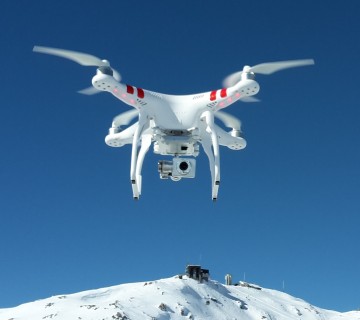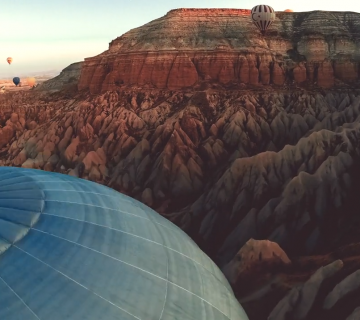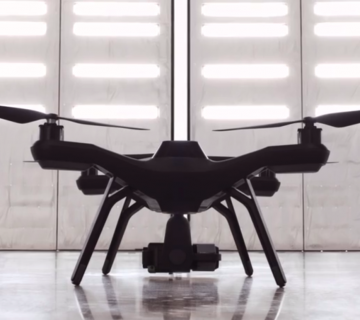It’s safe to assume that a camera-equipped drone was high on more than a few wishlists this Christmas. And it’s just as safe to assume that most of the people who own a drone, didn’t think twice before sending their gadgets skyward. They might unwittingly be breaking the law. Here’s what you need to know, when you’re getting started with aerial filming.
First of all, congratulations. You have a drone. You have the capability to easily shoot scenes that were once reserved for only the biggest budget productions. The technology is amazing and it’s only getting better. Those little plastic gizmos are powerful tools for a filmmaker. But as we all know; with great power comes great responsibility.
When flying a drone – in less sexy jargon called an Unmanned Aircraft System or UAS – you are entering airspace, and as such, you are entering the jurisdiction of the FAA. If you want to stay on good terms with those guys – which we recommend – there are a few things you should consider and Know Before You Fly:
Are you a recreational user or a commercial user?
In the simplest of terms, are you making money on this or not? As long as you register your drone and follow certain safety guidelines, you are free to use your drone for hobby use. Take pictures, film video, play around for your own, personal enjoyment. Go nuts – within the guidelines. For amateur filmmakers this might become a grey area though, when you start filming with the intent to use the footage in a film that you will eventually distribute, even if chances of ever making any money off it are slim to none. Language in the guidelines suggest that if you are using the UAS to take photographs or video for compensation or sale to another individual, then that would be considered a commercial operation. So do different rules apply if you – as filmmaker and operator – own your drone and will only be using the footage in your own projects, as opposed to if you – a cinematographer and operator – are providing the aerial videography as a service to a production? Possibly and probably. But give the FAA a call, if you’re in doubt.
Do you need to register your drone before flying?
Chances are the answer is yes. As of Dec 21st 2015, the FAA requires all owners of model aircraft, small unmanned aircraft or drones weighing between 0.55 and 55 pounds to register online before taking to the skies. Good news is that the process is simple, quick and cheap. In fact, if you register your drone before Jan 20th 2016, it’s free. After that you’ll have to fork over a whopping $5. Recreational users can register online, but if you plan on using your UAS commercially, you will have to register by snail mail. And here you thought we’d finally arrived in the 21st century…
Are there rules for flying once you have the paperwork in order?
Yes. Lots. Thankfully, most of the rules are fairly common-sense, especially if you have ever operated any kind of machinery and been around other people. Still, make a list and reference it whenever flying, until you know it in your sleep:
- Fly below 400 feet and remain clear of surrounding obstacles
- Keep the aircraft within visual line of sight at all times
- Remain well clear of and do not interfere with manned aircraft operations
- Don’t fly within 5 miles of an airport unless you contact the airport and control tower before flying
- Don’t fly near people or stadiums
- Don’t fly an aircraft that weighs more than 55 lbs
- Don’t be careless or reckless with your unmanned aircraft – you could be fined for endangering people or other aircraft
These are the guidelines for recreational use. If you are shooting for commercial use, more restrictions – and a few allowances – apply. Read up on the specifics here. The FAA has partnered with the Association for Unmanned Vehicle Systems International (AUVSI) and the Academy of Model Aeronautics (AMA) on an educational campaign – aptly named Know Before You Fly – to ensure that you know everything you need to know and that you have tools to help you register your drone, or file for exemptions if you are a commercial user.
Finally; is it worth the trouble?
Granted, after a few years of glorious, no-rules, Wild West flying, there are certain annoying hoops to jump through before take-off. But still. This:







Join the Conversation →